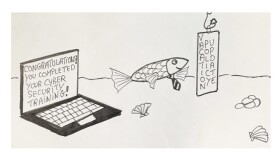The Supreme Court rules that a murder conviction should not have been thrown out because the victim's family wore lapel-pin pictures of the victim to the trial.
The justices ruled that because they'd never set any precedent on the wearing of such buttons to a trial, an appeals court was not free to consider whether buttons prejudiced a jury against a defendant.
In its ruling, the Supreme Court did not decide whether such buttons are allowed or not. The justices returned the case to the appeals court for further consideration.
As more victims' families wear buttons or engage in other forms of silent protest, the court sidestepped the issue, seeming to warn the lower courts about the practice without actually barring it.
In the past, the Supreme Court has ruled that having defendants wear prison clothing when appearing before a jury impermissibly prejudices the defendant's right to a fair trial.
And the court has struck down convictions in cases where there was a mob atmosphere or circus atmosphere in the courtroom.
But the court has never ruled on whether spectators can wear buttons -- or make other kinds of silent statements.
The current case involved a California murder. The defendant, Mathew Musladin, claimed he was acting in self defense when he killed his estranged wife's boyfriend.
At trial, the victim's family wore buttons that bore a picture of the dead man taken when he was in the military and wearing a uniform. The defense said the act was an appeal for sympathy, in addition to being misleading; the victim was no longer in the military and had drugs in his blood when he died.
Copyright 2022 NPR. To see more, visit https://www.npr.org. 9(MDAzMjM2NDYzMDEyMzc1Njk5NjAxNzY3OQ001))






